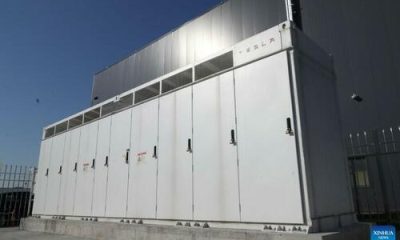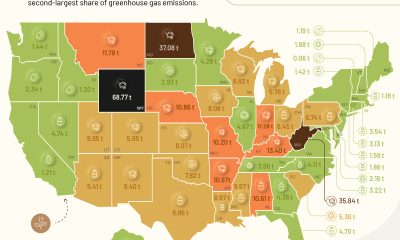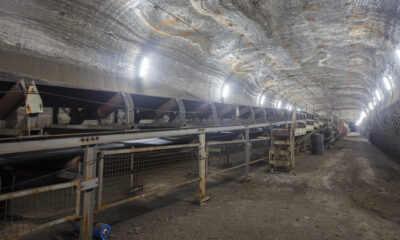Energy & Critical Metals
Is Europe Headed Towards A Natural Gas Demand Glut?
Perhaps the biggest global energy development in 2022 was Russia’s decision to dramatically curtail natural gas shipments to Europe via
The post Is Europe…

Perhaps the biggest global energy development in 2022 was Russia’s decision to dramatically curtail natural gas shipments to Europe via pipelines. In turn, European countries, particularly Germany, turned to liquefied natural gas (LNG) imports from the U.S. and Qatar to fill the gap.
Indeed, U.S. LNG exports to Europe soared to an average of about 7.2 billion cubic feet per day (Bcf/d) in 2022 from around 3.2 Bcf/d in 2021. Similarly, exports from Qatar grew 23% and, remarkably, exports from Russia increased 12%.

To address longer term supply issues, European countries decided to fast-track the construction of LNG import facilities. However, just as nations typically look backward and build up armaments that would have been useful in fighting the last war, many European countries seem to be building far more LNG import capacity than will be needed, according to an analysis prepared by the Institute for Energy Economics and Financial Analysis (IEEFA).
The IEEFA expects Europe’s LNG demand will increase again in 2023 but start to fall off in 2024. Surprisingly effective energy conservation efforts, as well as more renewable power generation capacity coming on, are the principal reasons for the possible reversal in future demand growth.
If LNG demand were to follow this pattern, a substantial amount of the LNG capacity under construction may prove to be excess. For example, Germany, which had no LNG import capacity before 2022, plans to spend US$10.5 billion over the next 15 years on import facilities. This could result in excess import capacity in that country alone of 0.9 Bcf/d by 2030.
Other European countries, particularly those which already had some LNG import capacity in place, will add even more unneeded facilities. Spain, Turkey, and the UK may have total excess capacity by 2030 of 4.8 Bcf/d, 4.3 Bcf/d, and 3.9 Bcf/d, respectively.

If these developments unfold in the manner the IEEFA projects, which would in turn cause LNG demand to fall well below LNG supply, LNG prices seem certain to weaken. European and Asian spot LNG prices have already fallen to around US$12/Mcf and US$14/Mcf, respectively, as natural gas prices have plummeted in Europe and the U.S. due to excess supply and generally warm weather.
Under this scenario, the stocks of all LNG industry participants, including LNG producers like Cheniere Energy, Inc. (NYSE: LNG) and owners of tanker fleets, could be negatively impacted.
Information for this story was found via the IEEFA and the sources and companies mentioned. The author has no securities or affiliations related to this organization. Not a recommendation to buy or sell. Always do additional research and consult a professional before purchasing a security. The author holds no licenses.
The post Is Europe Headed Towards A Natural Gas Demand Glut? appeared first on the deep dive.

Uranium Exploration Company Announces Additional Staking in the Athabasca Basin
Source: Streetwise Reports 12/22/2023
Skyharbour Resources Ltd. announced an update from its Canada-based Falcon Project along with additional…
Tesla Launches New Mega Factory Project In Shanghai, Designed To Manufacture 10,000 Megapacks Per Year
Tesla Launches New Mega Factory Project In Shanghai, Designed To Manufacture 10,000 Megapacks Per Year
Tesla has launched a new mega factory…
Giving thanks and taking stock after “a remarkable year”
An end-of-year thank you to our readers, industry colleagues and advertisers before Electric Autonomy breaks from publishing until Jan. 2
The post Giving…















